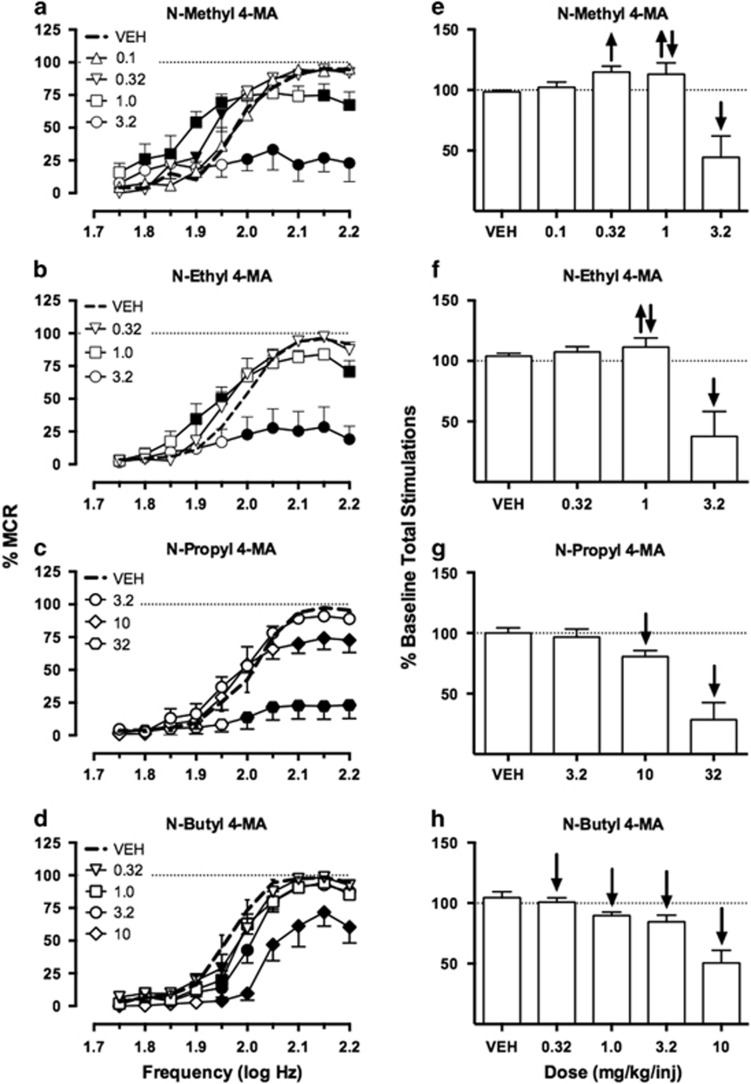Figure 5.
Effects of N-substituted 4-MA analogs on ICSS in rats. Left panels (a–d) show full ICSS frequency-rate curves. Abscissae indicate brain stimulation frequency in log Hz. Ordinates indicate percent maximum control response rate (%MCR). Filled points show drug effects significantly different from VEH treatment as determined by two-way ANOVA followed by Holm–Sidak post hoc test (p<0.05). For all panels, there were significant main effects of frequency (p<0.001) and dose (p<0.001) (data not shown). Frequency–dose interactions were also significant (all p<0.001), and ANOVA results are as follows: N-methyl 4-MA, F(36, 180)=9.91, N-ethyl 4-MA, F(36, 180)=6.38, N-propyl 4-MA, F(36, 180)=7.01, and N-butyl 4-MA, F(36, 180)=2.93. Right panels (e–h) show summary data for the total number of stimulations delivered across all brain-stimulation frequencies. Abscissae indicate drug dose in mg/kg. Ordinates indicate total number of stimulations per component expressed as percent baseline (% baseline total stimulations). Upward/downward arrows indicate that ICSS rates were significantly increased/decreased for at least one brain-stimulation frequency as determined by analysis of full frequency-rate curves in the left panels. All points and bars show mean±SEM in six rats.

